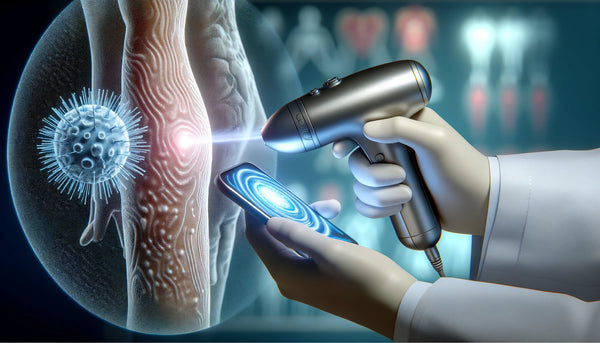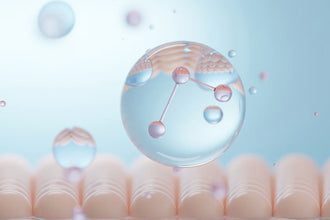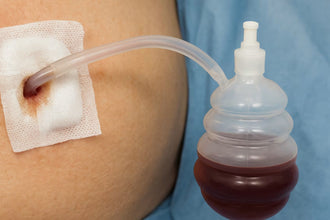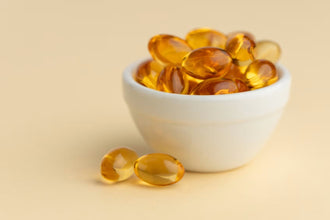
Waterproofing Your Wounds: How Silicone Gel Protects and Heals Through All Seasons
In the vast expanse of wound care and healing, the role of silicone gel stands out for its unique properties and multifaceted benefits. This article delves into how silicone gel acts as a protective barrier, effectively waterproofing wounds while promoting an optimal healing environment, regardless of the season.
Understanding the mechanisms behind silicone gel's effectiveness not only highlights its importance in contemporary wound care but also offers insights into best practices for those navigating their healing journey.

The Science Behind Silicone Gel in Wound Care
Silicone gel, a polymer-based treatment, has been a cornerstone in dermatology and wound management for decades. Its efficacy is grounded in its ability to create a breathable, yet waterproof barrier over a wound.
| Property | Description | Impact on Wound Healing |
|---|---|---|
| Moisture Retention | Silicone gel maintains a hydrated environment around the wound. | Accelerates cell migration and healing. |
| Temperature Regulation | Keeps the wound site at a stable temperature. | Ensures optimal healing conditions. |
| Bacterial Protection | Acts as a barrier against contaminants. | Reduces the risk of infection. |
This barrier function plays a pivotal role in maintaining a moist wound healing environment, which is widely recognized as essential for optimal healing. The gel's unique properties include:
- Moisture retention, which prevents the wound from drying out and forming a hard scab. This moisture-rich environment promotes faster cell migration, leading to quicker healing times.
- Temperature regulation within the wound site, protecting it from external temperature variations that can slow down the healing process.
- Protection from bacterial infections by acting as a physical barrier against contaminants, reducing the risk of infection.

The Benefits of Using Silicone Gel for Wounds
Silicone gel's effectiveness transcends seasons, offering year-round benefits for wound care:
- Accelerated Healing: By maintaining a moist environment, silicone gel can accelerate the healing process, reducing the overall recovery time.
- Scar Reduction: Silicone gel has been shown to reduce the appearance of scars, making it a valuable tool for both medical and cosmetic recovery.
- Versatility: Suitable for a wide range of wounds, from surgical incisions to minor cuts and abrasions, silicone gel is a versatile option for various healing needs.
Practical Application: Using Silicone Gel Across Seasons
The application of silicone gel in wound care varies slightly with the seasons, due to changes in weather and activities that might affect wound healing. Here are some considerations for using silicone gel throughout the year:

Spring and Summer:
- Increased Outdoor Activities: With more time spent outdoors, there's a higher risk of wound exposure to sunlight and contaminants. Silicone gel provides effective protection against these elements.
- Sun Protection: Silicone gel can help shield the wound from harmful UV rays, which is crucial since UV exposure can exacerbate scarring.
Fall and Winter:
- Dry Air and Indoor Heating: These conditions can dry out wounds. Silicone gel's moisture-retaining properties ensure the wound remains hydrated.
- Cold Protection: By maintaining a stable temperature over the wound site, silicone gel helps protect against the slowing effects of cold weather on the healing process.
Best Practices for Silicone Gel Application
- Clean and Dry: Before applying silicone gel, ensure the wound is clean and dry to prevent trapping bacteria under the gel.
- Thin Layer Application: Apply a thin layer of silicone gel over the wound. A little goes a long way in creating an effective barrier.
- Regular Reapplication: Follow the product's instructions for reapplication frequencies, usually once or twice daily, to maintain optimal conditions for wound healing.
The Future of Wound Care: Innovations in Silicone Gel Technology

The ongoing research and development in silicone gel formulations promise even greater advancements in wound care.
Newer silicone gels are being designed with enhanced properties such as increased breathability, longer-lasting adhesion, and even medication delivery systems for targeted healing. These innovations aim to further simplify the wound care process while improving outcomes for patients worldwide.
Conclusion
Silicone gel stands as a testament to the importance of integrating scientific innovation with practical wound care. Its ability to waterproof wounds while promoting an optimal healing environment makes it an indispensable tool in the wound care arsenal.
Whether navigating the healing process through the sweltering heat of summer or the biting cold of winter, silicone gel offers a protective, healing embrace that ensures wounds can recover swiftly and effectively, season after season. As we look to the future, the potential for new and improved silicone gel formulations holds the promise of even better wound care solutions, marking an exciting frontier in the intersection of technology and health.















